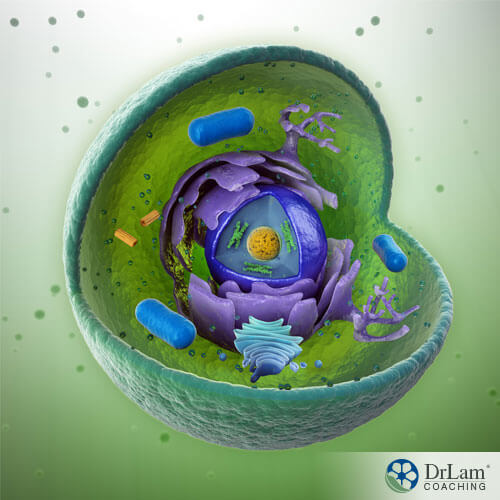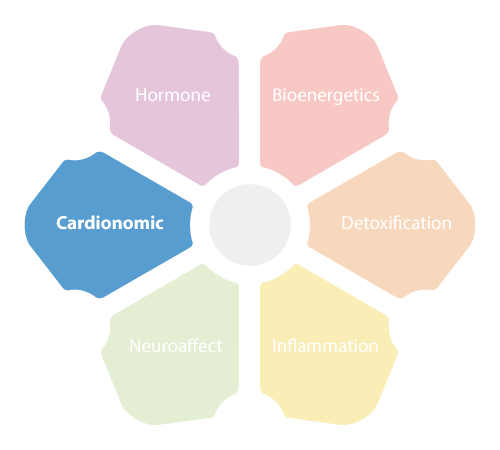 We’ve known for decades that exercise is extremely important for the human body. Studies have been carried out on the effects of movement, ranging from sedentary lifestyles and mild exercise to high-intensity interval training and have come up with a new conclusion: Exercise increases mitochondria biogenesis, the force that gives life to our cells. And the more scientists learn about the relationship between mitochondria and exercise, the more we can start to establish wellness plans that incorporate the correct kind of exercise into our lives. This could enhance the both quality of life and longevity.
We’ve known for decades that exercise is extremely important for the human body. Studies have been carried out on the effects of movement, ranging from sedentary lifestyles and mild exercise to high-intensity interval training and have come up with a new conclusion: Exercise increases mitochondria biogenesis, the force that gives life to our cells. And the more scientists learn about the relationship between mitochondria and exercise, the more we can start to establish wellness plans that incorporate the correct kind of exercise into our lives. This could enhance the both quality of life and longevity.
Mitochondria are known as powerhouses of our cells. They are responsible for producing adenosine triphosphate (ATP), the molecule that transports chemical energy into and out of our cells. The capacity of mitochondria to generate energy is affected by age. As we age, energy production begins to slow down.
Studies of mitochondria and exercise are optimistic and show a definite correlation between the two. Exercise encourages healthy cells and prevents aging by giving mitochondria a boost. Then, cells can make more RNA copies of the genes that code for mitochondrial proteins and the proteins that make muscle growth possible.
A recent study conducted by Dr. Sreekumaran Nair at the Mayo Clinic in Rochester, Minnesota in the US has shown just how important the relationship between mitochondria and exercise truly is. In the study, 72 participants were split into two groups: young (18–30 years old) and older (65–80 years old). Both groups were then split into 3 additional categories:
After a predefined period of time, biopsies were taken from the thigh muscles of each volunteer and molecular makeup, muscle mass, and insulin sensitivity of the muscle were compared to those of the sedentary control group. Although all types of exercise had a positive effect compared to remaining sedentary, high-intensity interval training had the greatest impact on the participants’ cells, in particular, their mitochondria.
The findings suggest that exercise induces mitochondrial biogenesis or the production of new tissues in the liver, brain, and kidney.
Other studies also point to the same result: Mitochondria and exercise are interrelated, and the relationship is extremely important — exercise is essential for mitochondrial health.
The benefits of exercise have long been recognized, but this new research is enabling doctors and scientists to uncover the mystery of what’s actually going on behind the scenes. Our cells need exercise and movement to function properly. But unfortunately for many people, the health of their mitochondria and exercise regimens are the farthest things from their minds. Some find it hard to fit exercise into their busy schedule, while others can’t find a type of exercise they enjoy. However, adding some form of exercise to your weekly, or even daily, routine is imperative.
 A call to action from the American Heart Association is quickly sweeping across the nation: Sitting is the New Smoking. Inactivity has become a major concern and is now one of the four leading causes of death around the world. The World Health Organization ranks inactivity as just as dangerous as high blood pressure, smoking, and high blood sugar.
A call to action from the American Heart Association is quickly sweeping across the nation: Sitting is the New Smoking. Inactivity has become a major concern and is now one of the four leading causes of death around the world. The World Health Organization ranks inactivity as just as dangerous as high blood pressure, smoking, and high blood sugar.
Campaigns are being initiated worldwide, in schools, doctors’ offices, and places of employment, to get people moving and to get them healthy. This can be done by promoting a variety of exercise programs created to fit into the busy lifestyles we’ve become accustomed to. With new knowledge of the relationship between mitochondria and exercise, you can now take more control and responsibility for your health and make the changes necessary to maintain a healthy body.
The combination of regular exercise, a healthy diet, and restful sleep is crucial to wellness. Although the duration and intensity of exercise differ from person to person, the benefits are proven. Regular exercise of any type can:
Believe it or not, there is such a thing as “too much exercise”. Therefore, it’s important to create an exercise regime that matches your current health condition and needs. Always discuss a new exercise program with your healthcare practitioner before you begin and never overexert yourself. Start slowly and make a conscious effort to move around more throughout the day. Some ideas include:
Find an exercise routine that fits you and your lifestyle, and monitor your progress. If you find you’re sore the day after your workout, you may have created too much oxidative stress and lactic acid in your body and you need to slow down your exercise pace. Make sure you’re breathing properly so your muscles can get the oxygen they need. If you’re suffering from Adrenal Fatigue Syndrome (AFS), it’s important to find an exercise routine that won’t overwork your body. During the AFS recovery process, it’s vital to give your body the rest it needs. The problem with AFS is that often you may not know how much exercise your body can take before you start doing more harm than good. That’s why it’s important to find an AFS specialist who can continuously tailor your exercise program to your body throughout your recovery.
There are many additional benefits of exercise besides those related to mitochondria and exercise. Exercise can improve your cognitive skills, help with depression, and reduce the risk of coronary heart disease and cancers.
 The level of stress in your life is another major contributor to your health. Prolonged or extreme physical or psychological stress can leave your adrenal glands weak and unable to keep up with the body’s demands for the important hormones needed on a daily basis, leading to Adrenal Fatigue. The body normally responds to stress via six interconnected circuits that are part of the NeuroEndoMetabolic (NEM) Stress Response, therefore, stress can affect the whole body—every cell and every organ. Stress, and how the body handles it, can be a matter of life and death.
The level of stress in your life is another major contributor to your health. Prolonged or extreme physical or psychological stress can leave your adrenal glands weak and unable to keep up with the body’s demands for the important hormones needed on a daily basis, leading to Adrenal Fatigue. The body normally responds to stress via six interconnected circuits that are part of the NeuroEndoMetabolic (NEM) Stress Response, therefore, stress can affect the whole body—every cell and every organ. Stress, and how the body handles it, can be a matter of life and death.
The heart is an important part of the cardionomic circuit and benefits immensely from exercise. The circuit is mainly controlled by the adrenal glands, cardiovascular system, and autonomic nervous system. Weak adrenals due to excessive stress directly impact the cardionomic circuit and the heart.
Therefore, the cardionomic circuit can be viewed as an alarm bell signaling stress and other underlying issues. Symptoms typically present themselves as
Cortisol, norepinephrine, and epinephrine—hormones linked to the adrenal glands—are the underlying drivers of the symptoms that often bring people to the doctor.
In conclusion, mitochondria and exercise go hand in hand. Moving away from a sedentary lifestyle to a healthier, more active way of living can be difficult but is invaluable for your overall wellness and longevity. According to scientific evidence, there is no substitute for exercise, especially when it comes to preventing aging and proper functioning of all the organs of the body. No medicine, supplement, or special diet can replace the combined benefits of mitochondria and exercise in preventing aging.
© Copyright 2020 Michael Lam, M.D. All Rights Reserved.
The relationship between mitochondria and exercise is positive and can benefit almost everyone. Of course, if you are suffering from a chronic health condition like AFS, you may need to exert caution when exercising and obtain permission from your primary healthcare physician before beginning any new exercise regime.
